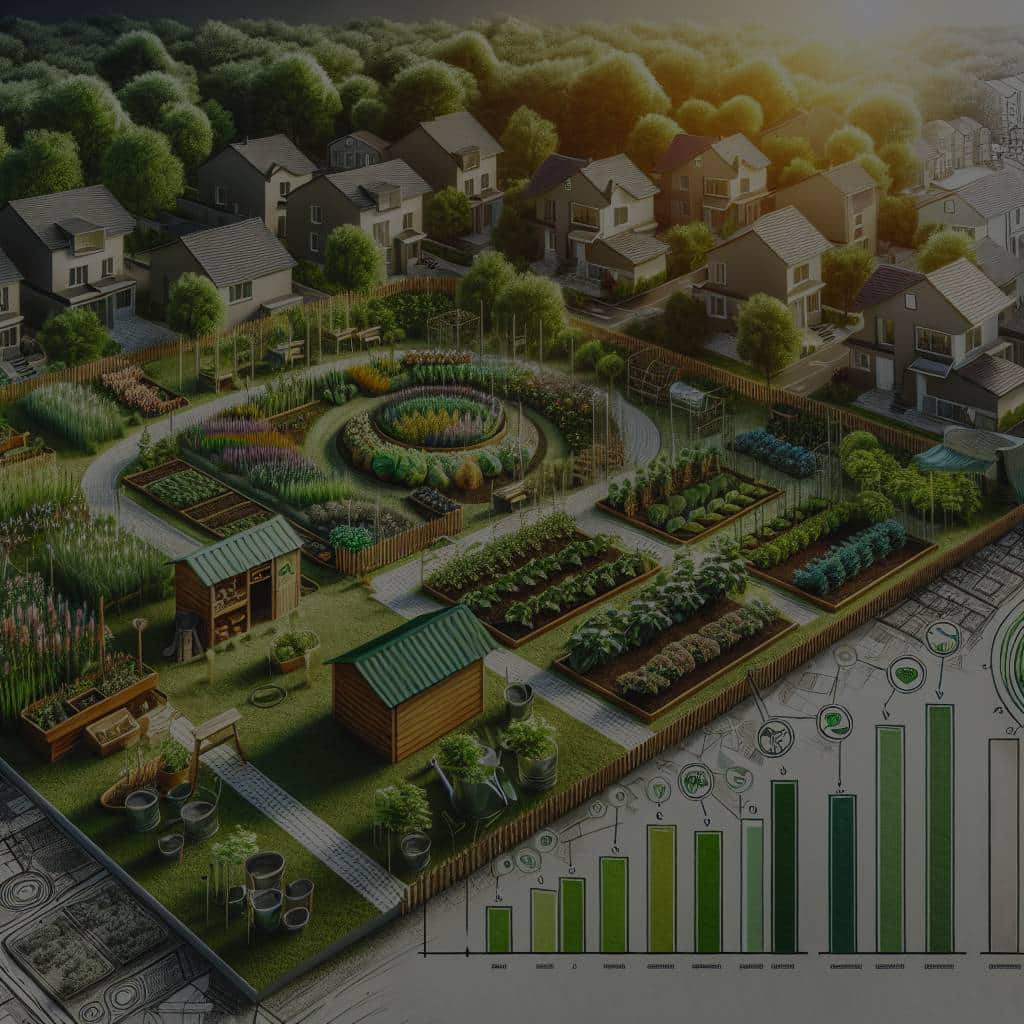Can Community Gardens Increase Residential Real Estate Value?

Urban gardening is much more than just a popular trend. It’s a solution to many of the challenges city dwellers face. More than just an avenue for fresh food, these green spaces can play a pivotal role in enhancing the quality of urban life. But that’s not all, community gardens have the potential to create significant impact on real estate values in the neighborhood. Let’s reflect on how these pockets of greenery can change the landscape of property value in your city.
The Rise of Community Gardens in Urban Neighborhoods
In densely populated urban areas, the sight of a lush community garden can be a breath of fresh air. The trend of urban gardening has seen a visible rise in the past decade. City dwellers have been turning rooftops, vacant lots, and abandoned spaces into fruitful gardens. The surge in popularity of community gardens can be attributed to a heightened awareness of sustainable living, food security, and health among residents.
Also to see : What Are the Implications of BREXIT on UK Real Estate Investment?
Community gardens are not just plots for growing food. They are public spaces that bring together diverse communities, forging connections among neighbors who might otherwise remain strangers. They are spaces where children and adults learn about the environment, agriculture, and the importance of fresh, locally grown produce. Such green spaces can also act as a buffer against urban heat, reducing the temperature in the surrounding areas.
The Implication on Real Estate Value
You might be wondering: what does all this have to do with real estate value? An increasing body of research is pointing towards a positive correlation between the presence of community gardens and property value.
Also to read : How to Ensure Compliance with the UK’s Changing Building Safety Regulations?
Property values, especially in urban environments, are influenced by several factors. One of the key factors is the desirability of the neighborhood. Amenities such as good schools, parks, cleanliness, availability of fresh produce, and community engagement play a significant role in defining desirability.
Community gardens contribute to many of these components. They not only provide access to fresh food but also offer recreational spaces, promote a sense of community, and contribute to sustainability. All these factors can elevate the attractiveness of the neighborhood, potentially boosting property values.
The Evidence: Case Studies
Several studies provide empirical evidence of how community gardens increase property values. For instance, a study in New York City found that properties within a 1000-foot radius of a community garden saw an appreciable increase in value over five years.
Another study in Philadelphia revealed that houses within a quarter-mile of a community garden had an increase in value, particularly in disadvantaged neighborhoods. The presence of such gardens was seen as an indicator of community strength and resilience, enhancing the appeal of the property to potential buyers.
Sustainable Urban Living: A Long-Term Investment
While immediate property value increase is an encouraging outcome, community gardens can be viewed as a long-term investment in sustainable urban living. They can contribute to a city’s resilience by providing local food sources, reducing the city’s carbon footprint, and promoting biodiversity.
Community gardens can also have indirect implications on health, reducing stress levels and encouraging physical activity among residents. By fostering environmental consciousness, they can inspire a generation of urban dwellers to become active participants in sustainable city living. These long-term benefits, though harder to quantify, have a profound impact on the quality of life and the desirability of a neighborhood in the long run.
In conclusion, community gardens are not just about gardening. They are vibrant, multifunctional spaces that can enhance urban living and potentially increase property values. As urban agriculture becomes more mainstream, their impact on neighborhoods and real estate could be a game-changer.
A Closer Look: How Community Gardens Impact Real Estate
As we delve deeper into the correlation between community gardens and real estate, we uncover numerous factors contributing to the potential increase in property values. These green spaces are not merely sources of fruits, vegetables, or a venue for health promotion, but they also serve as catalysts for urban enhancement and community development.
Community gardens are often created in vacant or abandoned spaces, instantly transforming these into vibrant and attractive locales. This aesthetic improvement can immediately enhance the appeal of the neighborhood, making properties more desirable. In many instances, these gardens are the first step towards revitalization in underprivileged neighborhoods, demonstrating that positive change is possible and underway.
From a real estate perspective, location is everything. Therefore, being in close proximity to a well-maintained community garden could potentially increase a property’s attractiveness. For instance, a property that is a stone’s throw away from fresh produce and a lively community space is certainly more appealing than one in a concrete jungle. The appeal is not limited to the visual aspect but also includes the benefits community members reap such as improved quality of life, health benefits, and the opportunity for social interaction.
Moreover, community gardens can act as significant selling points for real estate agents. They embody the idea of sustainable living and a tight-knit community, both of which are highly attractive to potential homebuyers.
Conclusion: Growing More Than Just Plants
In essence, community gardens are more than just plots of land where community members grow fruits and vegetables several times a day. They are vibrant green spaces that serve as community hubs, fostering social interaction, promoting sustainability, and significantly contributing to the quality of life in urban areas.
Aside from the tangible benefits such as fresh produce and improved aesthetics, these gardens also cultivate a sense of community and belonging among residents. They provide opportunities for community members to engage with one another, educate themselves about urban agriculture, and contribute positively to their environment.
As we have seen, the benefits of community gardens extend beyond the garden borders, influencing property values and shaping the perception of urban neighborhoods. This could be why more city dwellers are getting involved in community gardening, and why more jurisdictions are supporting the establishment of these green spaces.
In a time when the world is grappling with environmental challenges, community gardens could be the answer to sustainable urban living. They are not just boosting property values but also promoting healthier and more resilient communities. Building a thriving community garden could well be one of the wisest investments urban dwellers can make today. As urban agriculture continues to permeate the fabric of city life, we can expect its impact on real estate to be even more profound. The seeds sown in these gardens today could yield a rich harvest in the form of thriving neighborhoods and valuable real estate in the future.
